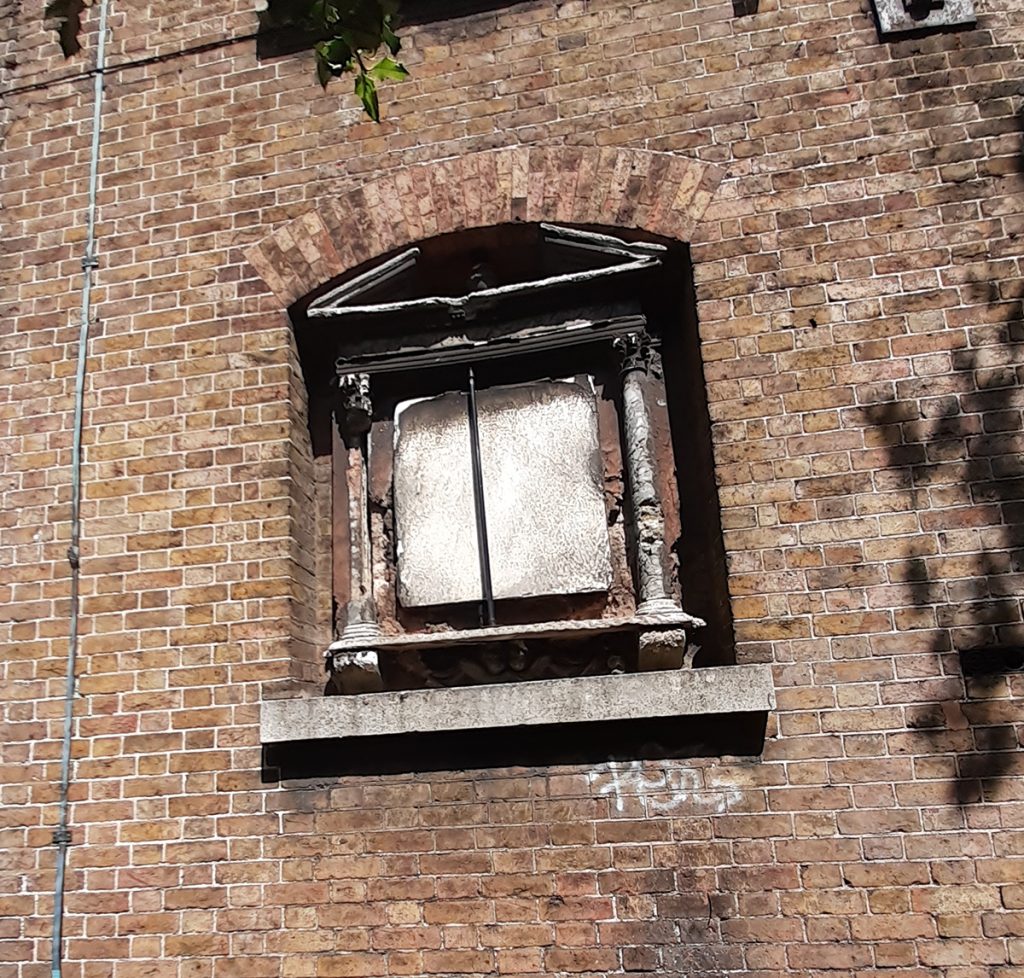The Man Who Died Too Soon
William Taylor died on 17th June 1747. The “new”, ie current, building was consecrated on 8th October 1747. You don’t usually bury people in an unconsecrated building which was clearly a great disappointment to William, who was a Page of the Bedchamber to Kings George I and II (see a description of this role below). We know all this because it says so on his memorial OUTSIDE the church.
“Sacred to the memory of William Taylor Esq. who was several years one of the pages of bed-chamber to their majesties King George the First and Second; was always a careful, diligent and faithful servant. He died the 17th of June 1747 aged lxiii. By his will he left several annuities and legacies to his relations, servants and to the poor, and others; and in his lifetime gave fifty pounds towards the rebuilding of this church, and earnestly desired to be interred therein; but after his demise, although the utmost solicitations were made use of by his executors, that favour could not be obtained for his remains.”
So his remains lie under the path to the south of the church, near the memorial on the south wall. Sadly this memorial is now in a very poor condition and completely illegible but fortunately was recorded by local historian Thomas Barrett so we have a lasting memorial to one man’s disappointment.
Curiously, on 24th June 1746, John Padmore, Apothecary, was buried in a vault under the new (unconsecrated) church.
One wonders why.
*Pages of the Bedchamber 1660-c. 1822 (from Wikipedia)
The pages of the bedchamber originally waited without Doors, at the Back-stairs; but now [c. 1720] they wait within the Bed-Chamber, where they take care that every thing be ready, especially during the time of the King’s Dressing; fetch Water for the Grooms of the Bed-chamber, which the King is to use, and other necessaries.
These places were in the gift of the groom of the stole. The procedures for swearing and admitting them to office were the same as those for the gentlemen of the bedchamber. They were usually six in number. During the reign of Anne the holders of the offices were designated `pages of the backstairs’. After 1760 this description was applied to a distinct body of pages. The pages of the bedchamber last occur in published lists in 1822.
The pages received wages of £2 13s 4d and board wages of £77 6s 8d amounting to £80 a year. In addition, they were entitled to livery of £47, fees of honour which yielded about £17 per annum under George I; and vails and gratuities from aspirants at the backstairs which have been estimated at about £120 per annum. After 1725, they received a further £365 apiece in lieu of diet.
